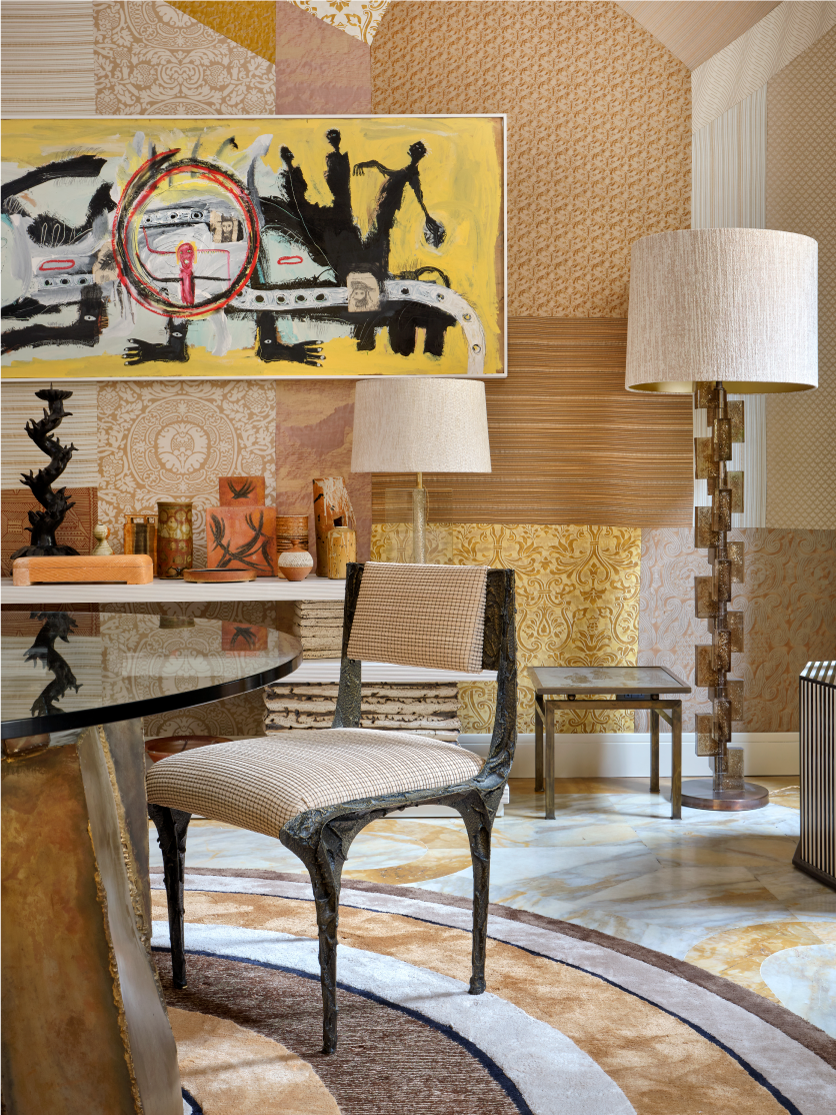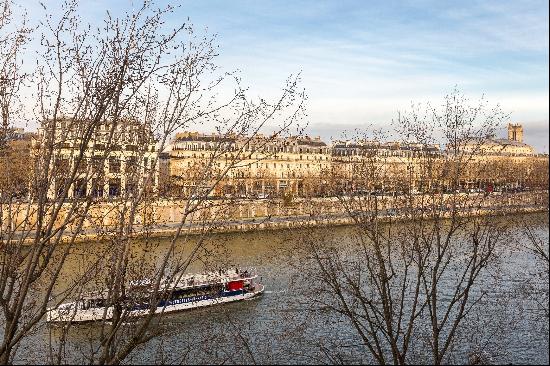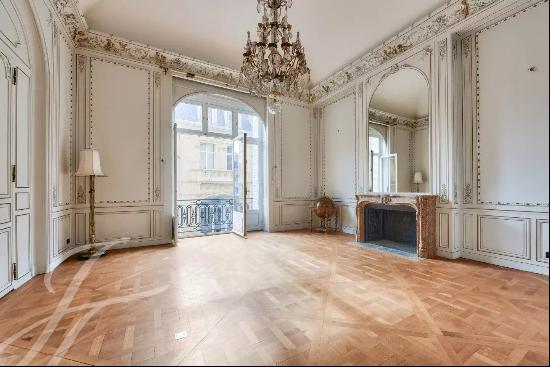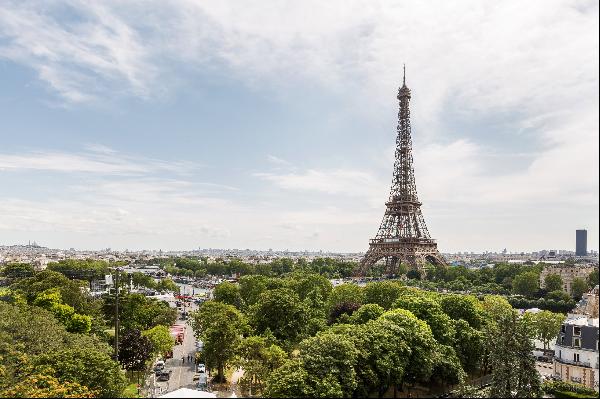
By Thea Hawlin
Overlooking the Giudecca canal sits a stunning Venetian town house once home to Countess Elsie Lee Gozzi, an American businesswoman and designer who, in the late 1940s, took over the famed Fortuny fabric factory next door. Since her death in 1994, the house has remained closed to the public — but now, thanks to a collaboration between interior designer Chahan Minassian and the storied fabric manufacturer, it has been given a new lease of life.
The founder of Chahan Interior Design and the Chahan Gallery stands at the foot of a large, sweeping staircase in the former Gozzi home. “The idea is to show what can go with what,” he says, “you can use 40 patterns of Fortuny in one room.”
It’s easy to see why Chahan feels a connection to Fortuny and its founder, Mariano Fortuny y Madrazo. The famous fabrics that continue to bear Fortuny’s name are just one facet of the Spanish designer’s creative explorations, which ranged from theatrical lighting systems to engravings and photography.

The grandeur and mystique of the textiles crafted by artisans in Fortuny’s factory since 1922 have always held an allure for Chahan. “When I was working for Ralph Lauren in the 1980s in New York you couldn’t do a project without Fortuny,” he says. There was some kind of unreproducible European edge to the brand: “Sometimes people say it’s cold, it’s metallic, it’s precious, but it’s how you use it.”
Just before the pandemic hit, Chahan moved to Venice. His usual “four to eight planes a week” became zero, bringing a profound change in pace. It’s one that seems to have stuck: although his main office remains in Paris, the designer now “functions” from the floating city. “This is the lifestyle everyone wants: the water, the lack of cars. Today, for me, Venice is more international than Paris or London — when it comes down to it, all the people I want to see in those cities come here.”
When he was invited to revive Countess Gozzi’s old home he leapt at the chance. With the Fortuny fabric arsenal at his disposal, he also ended up bringing many objects and artworks from his private collection into the rooms. “We’re not a white cube gallery,” he says, “I want to see how we can live with art.”

At the centre of the restoration lies a respect for the history of the home, with the “Americanised” layout unchanged. Chahan shows a photo of the dining room before its transformation, where an ornate Fortuny fabric engulfed the four walls, serving as a backdrop for an elegant, spare table and chairs. Now, a patchwork of fabric in golden hues adorns the walls, a quasi-sunset splayed out in dramatic abstract strips and angular cuts. “It was different,” says Chahan, “but to me, when you come in and you see this, it’s the same thing, just a 2024 interpretation: my vision, my colour scheme, my respect for Fortuny.”
For the designer, it’s about playing with the fabric’s rich heritage, seeing how it responds to different contexts. “This, to me, is a contemporary tapestry,” he says, gesturing to the textured wall, “but it also looks modern on a 1950s chair.” The Fortuny patterns are flipped and combined, colours clash and harmonise in equal measure: “Fortuny was also about the mix,” says Chahan, “when you go to the Palazzo Fortuny elsewhere in Venice there’s a three metre sofa with 50 cushions… I’m sure he changed them every season.”
This commitment to constant change is mirrored in his plans for the evolution of the house. “We’ll change it again in six months and it will be something else,” he says, casually. Rumour has it September will bring an exclusive exhibition for The Venice Glass Week. The important thing is that the doors of the house are now open. “This is not just for the Biennale,” says Chahan, “we’re moving in.”
Photography: Sebastien Veronese / chahan.com



















